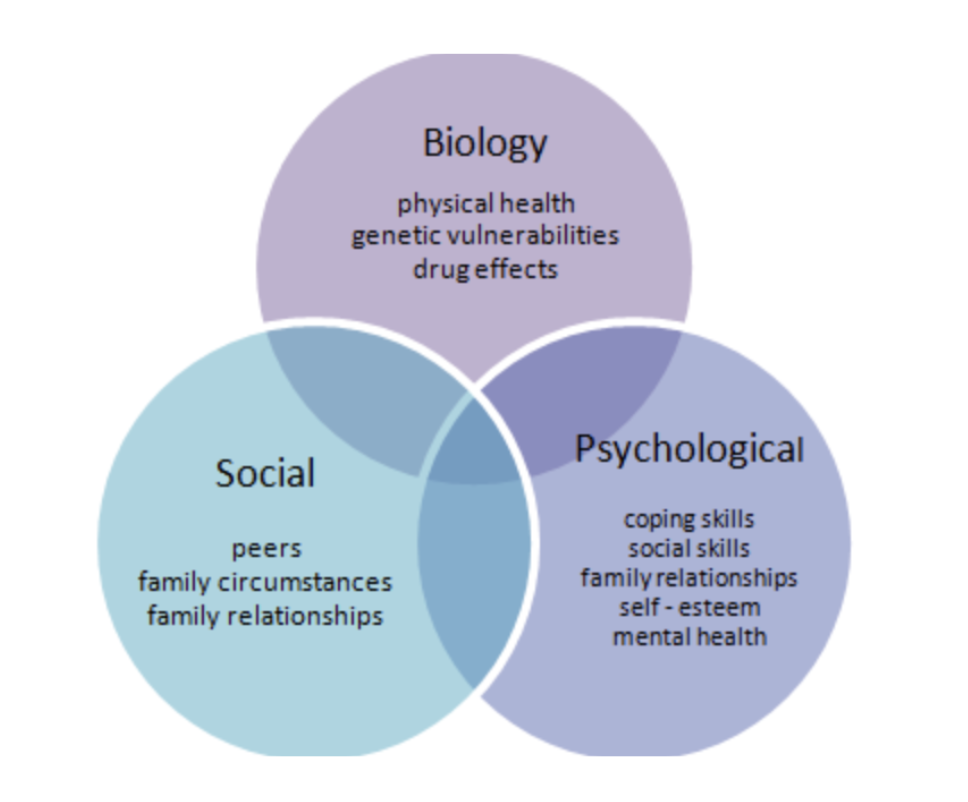Migraine is the third most common illness in the world. But the majority of migraine patients are dissatisfied with their current form of treatment. Most patients are frustrated, stressed, anxious, and exhausted by the cycle of trying and failing new treatment methods. On top of this, the average wait time to see a neurologist is thirty-five days, but depending on patients’ specific location, many end up waiting longer – even years – to see the right type of specialist.
To provide much-needed support, we have a lot to learn from the experiences of migraine patients who have actually lived with the condition, as well as cognitive behavioral philosophy. Doing so will bring an unprecedented level of compassion and empathy to patients who so desperately need it. Carolyn Rivkees, a professional patient who also runs the popular Instagram community @chronically_cheerful, has created her own program of bio psycho social support for chronic migraine. The biopsychosocial model is an interdisciplinary model that looks at the interconnection between biology, psychology, and socio-environmental factors. Our virtual migraine clinic, Neura Health, has productized this program via our in-app care plan and hands-on care coaching. Below are our top tips from the bio psycho social philosophy for managing chronic conditions like migraine.
Biological
1. Make the time and effort to understand your personal triggers. According to migraine threshold theory, each individual has different internal and external triggers that build up to a certain level until a migraine attack happens. Without a thorough understanding of your individual triggers, it will be difficult to identify habit changes that can prevent or lessen the severity and frequency of migraine attacks. By using a robust headache tracker and sharing the data with a neurologist, you can get a strong handle on what to avoid (e.g. processed food, humidity, too much bright screen time, etc.).
2. Be diligent, precise, and patient as you find the right treatment method(s) for you. There is no one-size-fits-all preventative medication, acute medication, nor treatment method for patients. Often patients cycle through multiple rounds of trial and error before they find what works best for them. To accelerate finding what works for an individual, it helps to diligently document the number of headaches, days with headache, and headache severity in correlation with a given medication(s) and treatment method. Apps like Neura’s help patients see insights on what is working versus not working.
Psychological
3. Practice self-compassion. As a chronic pain patient, I have found it critical to carve out time and space to practice self-compassion. No one with a chronic condition is to blame for their symptoms nor experience. Think about how to reshape your habits in support of your needs. For me, that means regular meditation sessions around lunch hour, weekly baths to soothe my muscles, and consistent sleep patterns to avoid additional fatigue and stress creeping on my existing issues. Another helpful method is journaling – write to yourself from the perspective of a friend showing kindness and unconditional acceptance. Assure yourself that you are doing the best that you can, given the circumstances.
4. Understand the basic neuroscience behind pain. Developing a basic understanding of pain is an empowering way to help yourself train your own nervous system. Pain evolved as a way for our bodies to tell our brains that there is danger, something threatening in our environment. Sometimes we can become overly sensitive to pain; our neural pathways can actually become stuck. Techniques like reframing, mindfulness, and pain reprocessing therapy can help us dial down our own nervous system. Care coaches can help guide patients through these therapies.
5. Practice grounding mantras. These sayings can help prevent you from spiraling.
- I am safe.
- I am watching my pain, from a distance, and I’m ok.
- I am doing my best and that is enough.
- I have gotten through this pain before.
6. Accept and acknowledge your productivity limits. Chronic migraine can be severely debilitating. On top of the baseline burnout that afflicts our society, living with this condition makes it even more difficult to accomplish all the tasks that you set out to do. Rather than blaming yourself, reassure yourself that you are not lazy or selfish. Allow yourself the time to recharge and restore yourself. Break up larger tasks into smaller, bite-size chunks so that you can more easily accomplish them with the right amount of breaks in between.
Social
7. Don’t lose your identity or self-worth. What are the qualities, interests, accomplishments you are most proud of? Focus on who you are, not who you aren’t. Remember the hobbies and moments you’ve been able to enjoy outside of migraine attacks and doctor appointments. Work to reincorporate them into your routine, even if just in small bits at first.
8. Regularly engage with a support group. Whether it be a group that regularly meets in person or virtually, or a few close friends or family members that you confide in, identify a support group you can regularly engage with. Fellow patients can not only provide emotional support, but also share tips and tricks on medicines, treatment methods, and specific providers that may help you.
Seeking a dedicated care team with an integrated app experience to support you along this journey? Check out Neura Health’s site to learn more.


